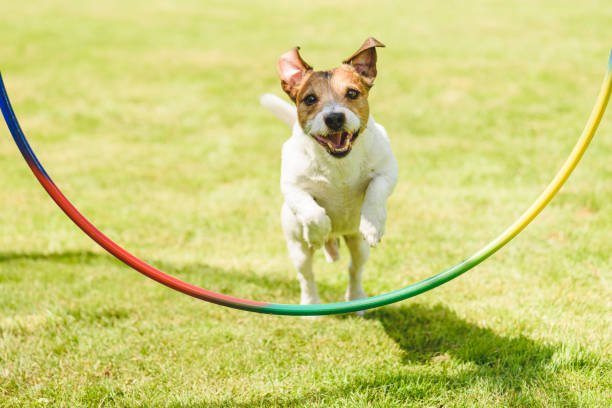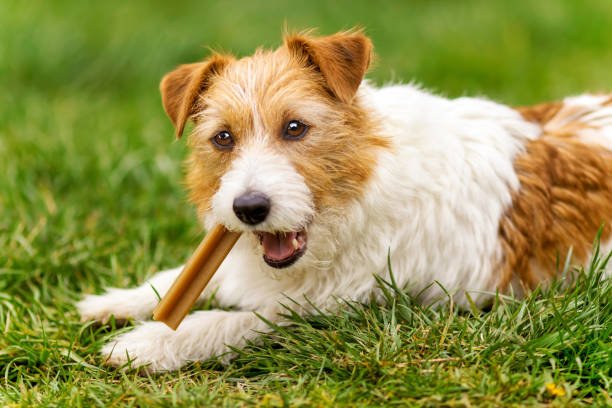How to Stop Your Jack Russell from Running Away and Keep Them Safe
Jack Russell Terriers are known for their boundless energy, intelligence, and playful nature. These qualities make them beloved companions, but they can also pose challenges when it comes to keeping them safe. If you’re a Jack Russell owner, you’ve likely experienced the heart-pounding moment when your furry friend darts off on an unauthorized adventure. While their adventurous spirit is one of the reasons we adore them, it’s essential to ensure their safety.
In this blog post, we’ll explore practical tips and strategies to prevent your Jack Russell from running away and to keep them secure. Understanding your Jack Russell’s unique characteristics and needs is the first step toward responsible pet ownership. By providing proper training, exercise, and a safe environment, you can enjoy the companionship of your Jack Russell without the constant worry of them escaping.
Understanding Your Jack Russell
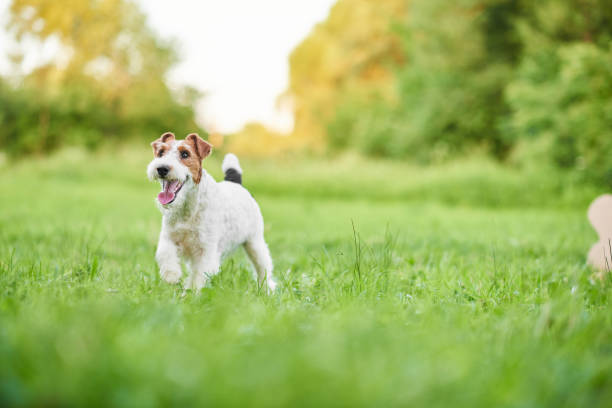
Before we delve into the strategies for keeping your Jack Russell safe, it’s crucial to understand this breed’s unique characteristics. Jack Russells are known for their lively personalities and distinctive traits, which can both be endearing and challenging for their owners.
Breed Characteristics and Traits
Jack Russells are a small but mighty breed, known for their strong-willed and independent nature. Here are some key characteristics and traits to keep in mind:
High Energy Levels: Jack Russells are bursting with energy, and they require regular exercise to stay content. Without adequate physical and mental stimulation, they can become restless and more likely to attempt an escape.
Curiosity: These dogs are incredibly curious by nature. Their inquisitive minds can lead them to explore their surroundings, often without understanding the potential dangers.
Stubbornness: Jack Russells are known for their stubborn streak. While this can make training a challenge, it also means that, with patience and consistency, they can learn and adapt to your expectations.
The Need for Mental and Physical Stimulation
To keep a Jack Russell happy and prevent them from seeking excitement outside of your home, it’s essential to provide both physical and mental stimulation:
Regular Exercise: Jack Russells thrive on physical activity. Daily walks, runs, and playtime in a secure area are essential to burn off their excess energy.
Mental Challenges: These intelligent dogs need mental stimulation as well. Consider puzzle toys, interactive games, and obedience training to keep their minds engaged. Mental exercise can be just as tiring for them as physical activity.
Socialization: Early socialization with other dogs and people is critical for preventing fear and aggression. A well-socialized Jack Russell is more likely to stay close and obey commands in various situations.
By understanding your Jack Russell’s characteristics and providing them with the right environment and stimulation, you’ll be better equipped to prevent them from running away and ensure their safety. In the next sections, we’ll explore training techniques, safety measures, and more to keep your adventurous companion secure and happy.
Training and Socialization

Training and socialization play a crucial role in ensuring your Jack Russell stays safe and well-behaved. With their spirited personality, it’s essential to establish clear boundaries and expectations from an early age. Here are some key training and socialization tips to help prevent your Jack Russell from running away:
Start with Basic Obedience Training
Consistency: Consistency is key when training your Jack Russell. Use the same commands and reward systems so that they understand what’s expected of them.
Positive Reinforcement: Utilize positive reinforcement techniques. Reward your Jack Russell with treats, praise, and affection when they obey commands or exhibit good behavior. This will encourage them to repeat those actions.
Training Sessions: Keep training sessions short and engaging. Jack Russells have short attention spans, so multiple, shorter sessions are often more effective than one long one.
Teach Recall Commands
One of the most important commands for a Jack Russell’s safety is the recall command, usually a simple “come” or “here.” Here’s how to teach it:
Use a Leash: Start in a controlled environment with a leash on. Call your Jack Russell to you and reward them when they come. Gradually increase the distance between you and your dog while practicing this command.
Distraction Training: Practice the recall command with various distractions in a secure area. This will help your Jack Russell learn to come to you even when there are tempting stimuli around.
Never Punish for Coming: Always reward your dog when they come to you, even if they were initially doing something they shouldn’t. Punishing them for coming to you can make them less likely to respond to the recall command in the future.
Emphasize the Importance of Early Socialization
Socializing your Jack Russell is crucial for preventing fear or aggression toward other dogs and people. Begin socialization during their early months:
Puppy Classes: Enroll your Jack Russell in puppy training classes where they can interact with other dogs and learn basic social skills.
Exposure: Expose your puppy to various environments, people, and experiences. This will help them become well-adjusted and less likely to react negatively in unfamiliar situations.
Positive Experiences: Ensure that socialization experiences are positive. Reward your puppy for calm and friendly behavior during interactions with other dogs and people.
By implementing these training and socialization techniques, you’ll build a strong foundation for your Jack Russell’s behavior and significantly reduce the chances of them running away. In the next sections, we’ll explore how to provide ample exercise, secure your home, and use identification methods to keep your Jack Russell safe and close to home.
Providing Adequate Exercise

Jack Russells are energetic and athletic dogs that require regular exercise to keep them physically and mentally satisfied. Providing them with enough physical activity is not only essential for their well-being but also a key factor in preventing them from running away. Here’s how you can ensure your Jack Russell gets the exercise they need:
Emphasize the Need for Daily Exercise
Routine Walks: Plan daily walks to help your Jack Russell burn off their excess energy. A tired dog is less likely to get the urge to explore beyond your property.
Playtime: Engage in play sessions, whether it’s fetch, tug-of-war, or interactive games. These activities are not only fun but also a great way to strengthen the bond between you and your pet.
Off-Leash Activities: In a safe and enclosed area, allow your Jack Russell off the leash to run and explore. Off-leash activities are essential for them to release their pent-up energy.
Offer Ideas for Physical Activities
Agility Training: Consider agility training for your Jack Russell. They excel in agility exercises, which not only provide physical exercise but also mental stimulation.
Running or Jogging: If you’re a runner or jogger, take your Jack Russell along. They love to run, and it’s a fantastic way for both of you to stay active.
Hiking: Explore nature together by taking your Jack Russell on hikes. Be sure to choose dog-friendly trails and keep them on a leash where required.
Suggest Mental Stimulation
In addition to physical exercise, it’s essential to keep your Jack Russell’s mind active:
Puzzle Toys: Invest in puzzle toys or treat-dispensing toys that challenge your dog’s problem-solving skills and keep them engaged.
Obedience and Trick Training: Regular training sessions not only reinforce good behavior but also provide mental stimulation. Teach your Jack Russell new tricks and commands to keep their mind sharp.
Rotate Toys: Avoid leaving all your dog’s toys out at once. Rotate their toys periodically to keep their interest and prevent boredom.
By prioritizing regular exercise and mental stimulation, you can help satisfy your Jack Russell’s need for activity and reduce their urge to escape in search of excitement. In the upcoming sections, we’ll explore how to secure your home and yard, the importance of supervision, and the use of identification methods to ensure your Jack Russell’s safety.
Secure Your Home and Yard
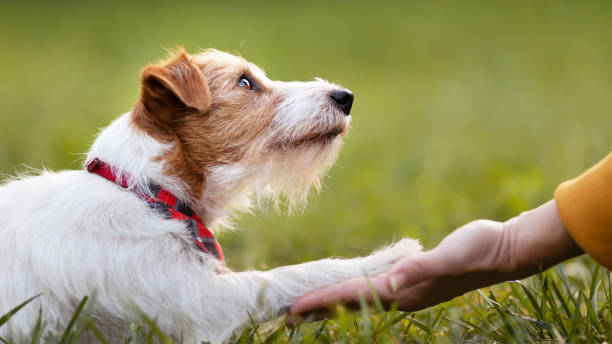
Ensuring the safety of your Jack Russell starts right at home. Jack Russells are known for their tenacity and agility, so it’s essential to create a secure environment that prevents them from escaping. Here are some steps to secure your home and yard:
Discuss the Importance of a Secure Home Environment
Fence Maintenance: Regularly inspect and maintain your fencing. Ensure there are no loose boards, gaps, or holes that your Jack Russell could squeeze through or under.
Height and Design: Jack Russells are skilled jumpers, so a fence should be at least 4 to 6 feet high to deter them from going over it. Consider fences with smooth surfaces to prevent climbing.
Gates and Latches: Check that gates are secure and equipped with reliable latches. Your dog might figure out how to open a gate if it’s not properly secured.
Offer Tips for Fencing and Gate Maintenance
Concrete Bases: For fences that are susceptible to digging underneath, consider burying a concrete base a few inches deep to discourage digging.
Visual Barriers: If your Jack Russell is easily distracted by what’s happening on the other side of the fence, consider adding visual barriers like shade cloth or wooden panels.
Supervision: Always supervise your Jack Russell when they are in the yard, even if you have a secure fence. It’s essential to keep an eye on them to ensure their safety.
Mention Common Escape Routes and How to Block Them
Digging Under Fences: If your Jack Russell is a digger, place rocks or chicken wire along the base of the fence to deter digging.
Squeeze-Through Gaps: Inspect your fence for any gaps or spaces your dog could slip through. Fill these with suitable materials to eliminate escape routes.
Tree Climbing: If you have trees near the fence, consider pruning branches that might provide a launching point for your agile Jack Russell.
Creating a secure home environment for your Jack Russell is a fundamental step in preventing escapes and ensuring their safety. In the upcoming sections, we’ll discuss the importance of supervision, leash training, identification methods, and ways to keep your dog engaged and content, reducing the desire to wander off.
Supervision and Leash Training
While creating a secure home environment is crucial, it’s equally important to provide direct supervision for your Jack Russell, especially when they are outside. Additionally, leash training is essential to ensure your dog’s safety and obedience during walks. Here’s how to effectively supervise your Jack Russell and train them to walk on a leash:
Explain the Importance of Supervision
Constant Vigilance: Emphasize the need for continuous supervision, especially when your Jack Russell is in the yard or any open area. These dogs are known for their quickness and determination.
Unpredictable Behavior: Jack Russells can be unpredictable, so you should always be prepared to react if they show signs of wanting to run or chase something.
Interactive Play: When spending time with your Jack Russell outdoors, engage in interactive play and training to keep their attention and prevent boredom.
Provide Guidance on Leash Training
Start Early: Begin leash training when your Jack Russell is a puppy. The earlier you start, the easier it will be for them to adapt to walking on a leash.
Positive Reinforcement: Use positive reinforcement during leash training. Reward your dog for walking beside you and following commands.
Consistent Commands: Teach consistent commands like “heel” or “walk” to let your Jack Russell know what’s expected of them on a leash.
Short Walks: For puppies and novice leash walkers, keep walks short and enjoyable to prevent frustration or resistance.
Gradual Progress: Gradually increase the length and complexity of your walks as your Jack Russell becomes more comfortable on a leash.
Avoid Pulling: Teach your dog not to pull on the leash by stopping when they do so. Resume walking once they’ve relaxed the tension on the leash.
By supervising your Jack Russell and providing effective leash training, you can have better control over their movements, reducing the chances of them running away and ensuring safe outdoor activities. In the next sections, we’ll discuss the importance of using identification and microchipping, ways to prevent boredom, and the benefits of positive reinforcement in keeping your Jack Russell safe and content.
Using ID and Microchipping
Even with the best preventive measures in place, accidents can happen, and your Jack Russell may find a way to escape. In such situations, proper identification is crucial for ensuring a safe return. Additionally, microchipping provides an extra layer of protection. Here’s how to effectively use identification and microchipping for your Jack Russell:
Stress the Importance of Identification
Collar with ID Tag: Always have your Jack Russell wear a collar with an ID tag. The tag should include your contact information, such as your name, phone number, and address. This way, if your dog is found by someone, they can quickly contact you.
Regularly Check the Tag: Ensure the ID tag is legible and up to date. Over time, tags can become worn, making the information difficult to read.
Explain the Benefits of Microchipping
Permanent Identification: Microchipping is a safe and permanent form of identification. A tiny microchip, about the size of a grain of rice, is inserted under your dog’s skin. It contains a unique identification number that can be scanned by a veterinarian or animal shelter.
Updated Contact Information: Ensure that your contact information is up to date with the microchip provider. If your Jack Russell is found and scanned, you want to be reachable as quickly as possible.
Recovery Success: Microchipping significantly increases the chances of reuniting with your Jack Russell if they become lost or escape. It’s a crucial safety net, especially if your dog loses their collar.
Check and Update Regularly: Periodically check the microchip’s functionality, and ensure that the contact information linked to it remains current.
By ensuring your Jack Russell wears a collar with an ID tag and having them microchipped, you greatly enhance the chances of a safe return in case they ever manage to run away or get lost. In the upcoming sections, we’ll discuss strategies for preventing boredom, the benefits of positive reinforcement in training, and how to deal with escapes when they do happen.
Tips for Preventing Boredom

Jack Russells are intelligent and active dogs, and boredom can lead to undesirable behaviors and even escape attempts. To keep your Jack Russell engaged and content, it’s essential to provide mental stimulation and activities that prevent boredom. Here are some strategies to keep your Jack Russell entertained:
Discuss the Risks of Boredom and Restlessness
Destructive Behavior: Boredom can lead to destructive behaviors, such as chewing furniture, digging, or excessive barking. Preventing these behaviors will reduce the chances of your Jack Russell escaping out of frustration.
Restlessness: A bored Jack Russell may become restless and anxious, making them more likely to seek adventure outside of your home.
Offer Ideas for Interactive Toys and Puzzles
Puzzle Toys: Invest in puzzle toys that challenge your dog’s problem-solving skills. These toys often dispense treats or kibble, rewarding your Jack Russell for their efforts.
Interactive Feeders: Consider interactive feeders that make mealtime more engaging. Your dog will have to work for their food, providing mental stimulation.
Hide and Seek: Play hide and seek with your dog. Hide treats or toys around the house or yard for them to find. This game engages their senses and keeps them entertained.
Mention the Benefits of Rotating Toys and Activities
Toy Rotation: To keep your Jack Russell’s interest piqued, rotate their toys regularly. This ensures that they don’t become bored with the same toys day after day.
Variety in Activities: Change up your dog’s daily routine by introducing new activities or games. Novelty keeps them mentally engaged.
By addressing boredom and restlessness with engaging activities, you’ll reduce the likelihood of your Jack Russell attempting to escape in search of entertainment. In the next sections, we’ll explore the benefits of positive reinforcement in training, how to deal with escape situations, and conclude with a recap of the key points in keeping your Jack Russell safe and happy.
Positive Reinforcement and Rewards
Training your Jack Russell with positive reinforcement is a highly effective way to encourage good behavior and prevent them from running away. Positive reinforcement relies on rewarding your dog for desirable actions and behaviors. Here’s how to apply positive reinforcement in training your Jack Russell:
A. Explain the Benefits of Positive Reinforcement
Builds Trust: Positive reinforcement fosters trust and a stronger bond between you and your Jack Russell. They’ll associate you with good experiences and rewards.
Motivates Good Behavior: By rewarding the behaviors you want to see, you motivate your dog to repeat those actions in the future.
Reduces Anxiety: Training with positive reinforcement is less stressful for your dog and helps alleviate anxiety or fear associated with traditional punishment-based methods.
Provide Examples of Rewarding Good Behavior
Treats: Small, tasty treats are one of the most common rewards for good behavior. Give a treat immediately after your Jack Russell follows a command or exhibits a desired behavior.
Verbal Praise: Combine treats with enthusiastic verbal praise to show your appreciation. Use a cheerful and encouraging tone to convey your happiness with their actions.
Affection: Physical affection, such as petting, hugging, or belly rubs, can be a powerful reward for many dogs.
Playtime: Some dogs are highly motivated by play. Offer a quick game of fetch or a favorite toy as a reward for their good behavior.
Share Tips on Consistency in Training
Set Clear Expectations: Ensure that your commands and expectations are clear and consistent. Use the same words and hand signals each time you ask your Jack Russell to do something.
Regular Training Sessions: Schedule regular training sessions, keeping them short and engaging to maintain your dog’s focus and motivation.
Practice in Different Environments: Gradually introduce distractions and practice commands in different environments to reinforce good behavior in various situations.
Positive reinforcement can be a game-changer in training your Jack Russell and preventing them from running away. It not only enhances their obedience but also makes the training experience enjoyable for both you and your dog. In the next sections, we’ll cover how to deal with escape situations and conclude with a recap of the key points in keeping your Jack Russell safe and happy.
Dealing with Escapes
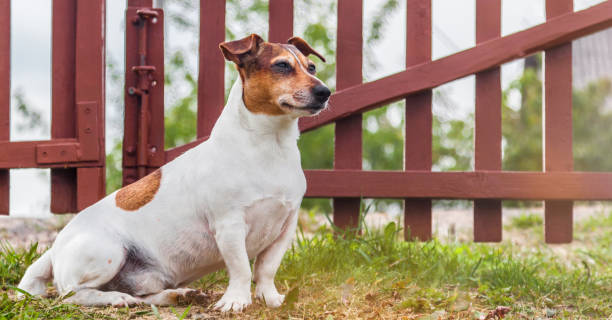
Despite your best efforts, there may be instances when your Jack Russell manages to escape. It’s crucial to know how to react and increase the chances of a safe return. Here’s what to do if your Jack Russell escapes:
Offer Steps to Follow if Your Jack Russell Escapes
Stay Calm: It’s natural to panic, but staying calm is essential. Panicking can make it harder to think clearly and take the necessary actions.
Don’t Chase: Avoid chasing your Jack Russell, as this may encourage them to run further. Instead, call their name in a cheerful tone to get their attention.
Use Recall Commands: If your dog is trained with recall commands, use them to entice your Jack Russell to return to you.
Inform Neighbors: If your dog escapes in a residential area, inform your neighbors. They can keep an eye out for your dog and assist.
Search Nearby: Start searching the immediate area where your Jack Russell was last seen. They might not have ventured far.
Contact Local Shelters: Get in touch with local animal shelters, veterinary clinics, and rescue organizations to report your missing dog.
Create Lost Dog Flyers: Create flyers with a clear photo of your Jack Russell, your contact information, and a description of your dog. Distribute these flyers in the area and online through social media.
Share Strategies for Calmly Retrieving Your Dog
Use Temptations: If your dog is close but cautious, use treats or their favorite toy to entice them to come to you.
Don’t Punish: Refrain from scolding or punishing your dog when they return. This could make them less likely to come back in the future.
Secure Your Yard: After a successful retrieval, evaluate how your dog escaped and take steps to prevent future escapes.
Microchip Scanning: If your Jack Russell is microchipped, ensure that the chip’s information is up to date so that they can be easily identified and returned.
Remember that patience and a calm approach are vital when dealing with escape situations. With the right steps and strategies, you can increase the chances of a safe reunion with your Jack Russell.
Conclusion
In this comprehensive guide, we’ve explored the essential strategies and practices to prevent your Jack Russell from running away and keep them safe. To recap, here are the key points to ensure the safety and well-being of your beloved Jack Russell:
Understanding Your Jack Russell: Recognize their high energy levels, curiosity, and the importance of mental and physical stimulation.
Training and Socialization: Start with basic obedience training and teach recall commands. Prioritize early socialization to ensure your dog interacts well with others.
Providing Adequate Exercise: Incorporate regular walks, playtime, and off-leash activities to satisfy your dog’s need for physical activity.
Secure Your Home and Yard: Regularly inspect and maintain your fencing, gates, and latches. Address common escape routes and block them to create a secure environment.
Supervision and Leash Training: Keep a watchful eye on your Jack Russell when they are outdoors and use leash training to maintain control during walks.
Using ID and Microchipping: Always have your dog wear a collar with an ID tag, and consider microchipping as a permanent form of identification.
Preventing Boredom: Keep your dog mentally engaged with puzzle toys, interactive feeders, and new activities. Rotate toys and offer variety in their daily routine.
Positive Reinforcement and Rewards: Train your Jack Russell using positive reinforcement techniques, such as treats, verbal praise, and affection. Consistency is key in reinforcing good behavior.
Dealing with Escapes: Stay calm, avoid chasing your dog, use recall commands, and involve your community in the search. Create lost dog flyers and reach out to local shelters.
By implementing these strategies and practices, you can provide a safe and fulfilling life for your Jack Russell while reducing the risk of them running away. Responsible pet ownership, proper training, and a secure environment are the cornerstones of keeping your Jack Russell safe and happy.
Remember that every dog is unique, so adapt these tips to your Jack Russell’s individual needs and personality. With dedication and the right approach, you can enjoy a close and fulfilling relationship with your adventurous and spirited companion.
